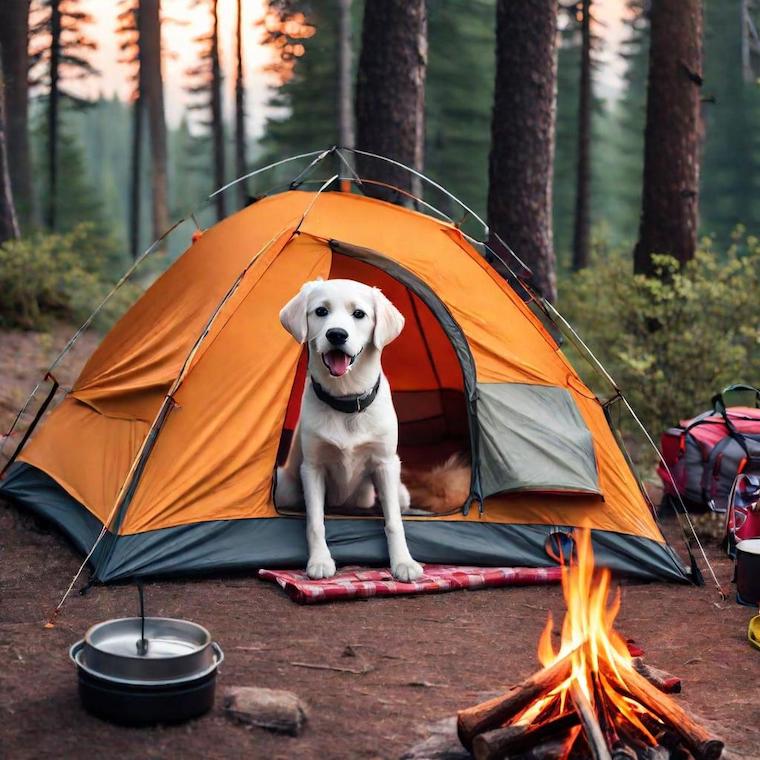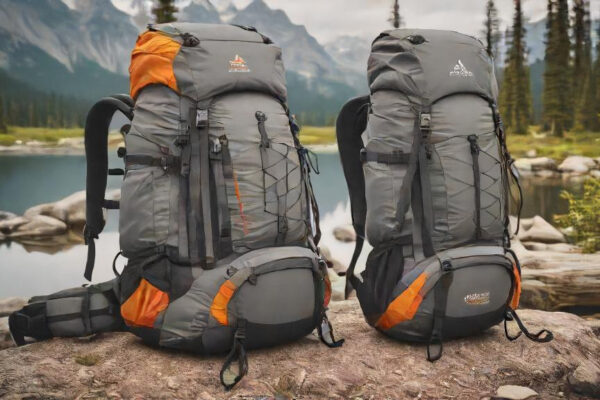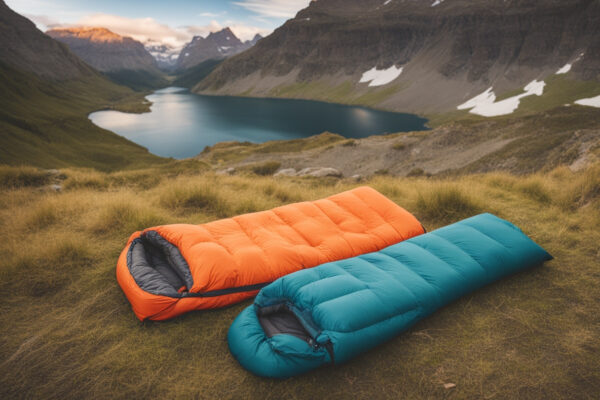
Essential Tips for Camping with Pets | Pet Safety & Etiquette
Camping with pets can be an incredibly rewarding experience, providing a unique opportunity to bond with your furry friend in the great outdoors. However, ensuring their safety and practicing good etiquette is crucial for a successful and enjoyable trip. Responsible pet ownership not only enhances your camping experience but also contributes to the overall enjoyment of other campers and helps protect the environment.
In this guide, we’ll explore the importance of pet safety and etiquette while camping, highlighting the benefits of bringing your pet along and providing tips for responsible behavior. Whether you’re a seasoned camper or new to the adventure, these guidelines will help you and your pet make the most of your outdoor excursion while respecting nature and fellow campers.
Choosing the Right Campground
Selecting the perfect campground is essential when camping with pets. Here’s a guide to help you choose a pet-friendly location that meets your needs:
- Pet Policies: Before booking a campground, check their pet policies. Some campgrounds have restrictions on the number, size, and breed of pets allowed. Ensure your pet meets these requirements to avoid any issues upon arrival.
- Amenities: Look for campgrounds that offer pet amenities such as dog parks, walking trails, or designated pet areas. These facilities can enhance your pet’s camping experience and make your stay more enjoyable.
- Campsite Layout: Consider the layout of the campground. Opt for campsites that provide enough space for your pet to move around comfortably. Avoid crowded or congested areas to prevent stress and ensure your pet’s safety.
- Nearby Activities: Look for campgrounds located near pet-friendly attractions or activities. Hiking trails, lakes, and beaches are great options for outdoor adventures with your pet.
- Reviews and Recommendations: Read reviews from other pet owners who have stayed at the campground. Their experiences can provide valuable insights into the campground’s pet-friendliness and overall atmosphere.

Preparing for the Trip
Before heading out on your camping adventure with your pet, it’s essential to make sure you have everything you need to keep them safe, comfortable, and happy. Here’s a checklist of essential items to pack and some tips for preparing your pet for the trip:
- Food and Water: Pack enough food for your pet’s entire stay, along with bowls for food and water. Consider bringing a portable water filter or water purification tablets if you’re camping in an area without clean water sources.
- Bedding: Bring your pet’s bed or a comfortable blanket for them to sleep on. Familiar bedding can help them feel more at ease in a new environment.
- Safety Gear: Ensure your pet has a sturdy collar with an ID tag containing your contact information. Consider bringing a leash or harness for walks around the campsite.
- Medications and First-Aid Kit: If your pet takes medication, pack enough for the trip. Additionally, bring a pet first-aid kit containing bandages, antiseptic wipes, and any other necessary supplies.
- Toys and Comfort Items: Bring your pet’s favorite toys or comfort items to keep them entertained and relaxed during the trip.
- Grooming Supplies: Pack grooming supplies such as brushes, nail clippers, and shampoo to keep your pet clean and comfortable.
- Health Documents: Carry copies of your pet’s health records, including vaccination records, in case of emergencies.
- Preparation Tips: Before the trip, acclimate your pet to camping gear such as tents and sleeping bags. Set up the gear in your backyard and let your pet explore and get comfortable with it.
- Outdoor Exposure: If your pet is not used to being outdoors, gradually introduce them to outdoor environments before the trip. Take them for short walks in parks or wooded areas to familiarize them with nature.
- Practice Camping Skills: Teach your pet basic camping skills such as coming when called, staying close to the campsite, and behaving around other campers and wildlife.
On-Site Safety Measures
When camping with your pet, it’s important to take precautions to keep them safe at the campground. Follow these guidelines and tips to ensure your pet’s safety:
- Use Leashes and Collars: Keep your pet on a leash at all times when outside your tent or RV. Use a sturdy collar with an ID tag containing your contact information in case your pet gets lost.
- Supervise Your Pet: Always keep an eye on your pet, especially in unfamiliar surroundings. Watch out for potential hazards such as wild animals, poisonous plants, and steep cliffs.
- Secure Your Campsite: Keep your campsite secure to prevent your pet from wandering off. Use a tie-out stake or portable pet fence to create a safe area for your pet to explore.
- Avoid Wildlife Interaction: Keep your pet away from wild animals to prevent injuries or conflicts. Store food and trash securely to avoid attracting wildlife to your campsite.
- Stay Hydrated: Ensure your pet has access to clean water at all times, especially during hot weather. Carry a portable water bowl and refill it regularly.
- Watch for Overheating: Watch for signs of overheating in your pet, such as excessive panting or lethargy. Provide shade and plenty of water to help them cool down.
- Be Prepared for Emergencies: Familiarize yourself with the nearest veterinary clinic or animal hospital in case of emergencies. Carry a pet first-aid kit and know how to perform basic first aid for pets.
- Respect Other Campers: Be mindful of other campers and their pets. Keep your pet from approaching or disturbing other campers and their belongings.
Respecting Wildlife
When camping with your pet, it’s important to respect wildlife and their habitats. Follow these guidelines to ensure your pet’s behavior is respectful of the environment and other campers:
- Importance of Respect: Explain to your pet why it’s important to respect wildlife and their habitats. Help them understand that wild animals should not be chased or disturbed.
- Leash Your Pet: Keep your pet on a leash at all times to prevent them from chasing or harassing wildlife. This also helps protect your pet from encountering potentially dangerous animals.
- Stay on Designated Trails: Stick to designated trails and paths to avoid disturbing wildlife habitats. Keep your pet close and avoid wandering into sensitive areas.
- Do Not Feed Wildlife: Feeding wildlife can disrupt their natural behavior and diet. Keep all food secure and away from animals.
- Be Aware of Your Surroundings: Keep an eye out for wildlife and be prepared to move away calmly if you encounter any. Teach your pet to do the same.
- Respect Quiet Hours: Keep noise levels down, especially during early morning and late evening, to avoid disturbing wildlife and other campers.
- Dispose of Waste Properly: Dispose of pet waste in designated areas or pack it out with you. Leaving waste behind can attract unwanted wildlife.
- Lead by Example: Show your pet how to behave respectfully by setting a good example. Avoid yelling or chasing wildlife yourself.
Campsite Etiquette
Maintaining proper campsite etiquette is crucial when camping with your pet. Follow these guidelines to ensure a pleasant experience for yourself, your pet, and other campers:
- Pet Waste Disposal: Always clean up after your pet. Use designated pet waste stations or carry waste bags to dispose of pet waste properly. Do not leave waste bags lying around or bury them at the campsite.
- Cleanliness: Keep your campsite clean and tidy. Store pet food and supplies in sealed containers to prevent attracting wildlife. Sweep away any debris or pet hair from the campsite.
- Noise Levels: Be mindful of noise levels, especially early in the morning and late at night. Keep barking and other loud noises to a minimum to avoid disturbing other campers.
- Respect Other Campers’ Space: Keep your pet on a leash and respect other campers’ privacy and space. Avoid letting your pet roam freely into neighboring campsites.
- Control Your Pet: Ensure your pet is well-behaved and under control at all times. Keep them from approaching other campers or their pets without permission.
- Observe Quiet Hours: Respect campground rules regarding quiet hours. Keep noise levels down during these times to allow others to enjoy a peaceful camping experience.
- Be Courteous: Be courteous to other campers and their pets. Offer assistance if needed and be respectful of different camping styles and preferences.
- Leave No Trace: Follow the Leave No Trace principles by leaving your campsite as you found it. Pack out all trash, including pet waste, and leave nature undisturbed.
Health and Emergency Preparedness
Ensuring your pet’s health and safety is paramount when camping. Follow these tips to prevent common health issues and be prepared for emergencies:
- Tick Prevention: Use tick preventatives recommended by your veterinarian and check your pet for ticks regularly, especially after spending time in wooded or grassy areas. Remove ticks promptly and properly to reduce the risk of tick-borne diseases.
- Overheating Prevention: Keep your pet cool and hydrated, especially in hot weather. Provide shade and plenty of water, and avoid strenuous activities during the hottest parts of the day. Watch for signs of overheating, such as excessive panting, drooling, or weakness.
- Food and Water Safety: Ensure your pet has access to clean, fresh water at all times. Avoid giving them untreated water from natural sources, as it may contain harmful bacteria or parasites. Pack enough pet food for the entire trip and store it in a sealed container to prevent contamination.
- Creating a Pet First-Aid Kit: Pack a pet first-aid kit that includes:
- Bandages and gauze
- Antiseptic wipes or spray
- Tweezers for tick removal
- Scissors
- Thermometer
- Hydrogen peroxide (for inducing vomiting, if advised by a veterinarian)
- Your pet’s medications and medical records
- Knowing How to Respond to Emergencies: Familiarize yourself with basic first aid for pets and know how to recognize signs of distress. In case of emergencies, contact a veterinarian or animal emergency center immediately.
- Heatstroke Awareness: Be aware of the signs of heatstroke, such as excessive panting, drooling, rapid heartbeat, and lethargy. If you suspect heatstroke, move your pet to a cool, shaded area, offer water, and seek veterinary care immediately.
- Avoiding Poisonous Plants and Substances: Familiarize yourself with common poisonous plants in the area where you’ll be camping and keep your pet away from them. Also, be mindful of any toxic substances that your pet might encounter, such as antifreeze or pesticides.
Activities for Pets
Camping provides a wonderful opportunity for your pet to explore and enjoy the outdoors. Here are some fun and safe activities to enjoy with your pet while camping:
- Hiking: Take your pet on scenic hikes, but make sure the trails are pet-friendly and suitable for your pet’s fitness level. Bring plenty of water and take breaks as needed.
- Swimming: If your pet enjoys water, let them cool off and have fun swimming in a lake, river, or other safe water bodies. Always supervise your pet around water.
- Fetch and Frisbee: Play games of fetch or frisbee in open, grassy areas. This can provide both physical exercise and mental stimulation for your pet.
- Nature Walks: Take leisurely walks around the campground or nearby nature trails. Let your pet explore new sights, smells, and sounds while on a leash.
- Campsite Games: Set up a small agility course using natural obstacles like logs or rocks. This can provide a fun challenge for your pet and help burn off excess energy.
- Interactive Toys: Bring along interactive toys that dispense treats or require problem-solving skills. This can keep your pet entertained and mentally stimulated while at the campsite.
- Quiet Time: Allow your pet some quiet time to relax and unwind after a day of activities. Provide a comfortable resting area and some downtime to recharge.
- Safety First: Always keep your pet’s safety in mind during activities. Watch out for sharp rocks, hot surfaces, and other potential hazards that could harm your pet.
Camping with Pets: Conclusion
Camping with your pet can be a rewarding experience, but it’s important to prioritize their safety and practice good etiquette. Here’s a recap of key points for pet safety and etiquette in camping:
- Always keep your pet on a leash and under control to prevent them from wandering off or disturbing wildlife.
- Clean up after your pet and dispose of waste properly to maintain cleanliness at the campsite.
- Respect other campers’ space and be mindful of noise levels to ensure a peaceful environment for everyone.
- Be prepared for emergencies by packing a pet first-aid kit and knowing how to respond to health issues or injuries.
Remember, responsible pet ownership is key to enjoying a safe and enjoyable camping experience with your furry friend. By following these guidelines and being considerate of others, you can create lasting memories and strengthen the bond with your pet in the great outdoors.








